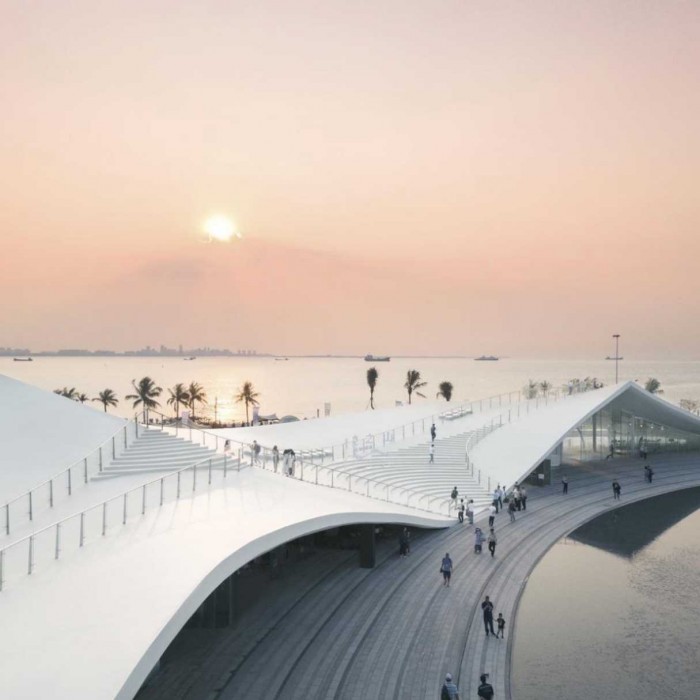Cloudy white rings slope gracefully up and down, tracing the natural undulation of the shoreline and resembling the contours of the mountains on the horizon, while central circular motifs describe a seashell-like aesthetic. These are the standout exterior features of Sky Mountain, a serene circular pavilion on the shore of China’s island province of Hainan, designed by Japanese architect and Design Indaba alum Sou Fujimoto.
Hainan, the southernmost Chinese province, is often dubbed ‘the Hawaii of China’ for its reputation as a renowned holiday hotspot. Sky Mountain, which overlooks the sea in the provincial capital of Haikou, is the second of two pavilions that have been built to encourage art lovers and tourists to come together in community spaces. ‘We believe the Haikou pavilion is a focal point providing an opportunity for travellers to meander between the city and nature with places for social happenings,’ says Fujimoto.
Deliberately angled westwards to allow visitors optimal views of the sunset over the sea, the pavilion sprawls across an area exceeding 2 000 square metres, with a rolling rooftop that flows from ground level, connecting the city with the sea, and vice versa. Visitors are invited to walk across the roof via various access points that connect to the central courtyard, which is lined with a tranquil water feature and offers spectacular views of the seaside town and the ocean.
Concealed beneath the undulating roof is a generous shared expanse of 800 square metres, featuring a curatorial space, a bookstore and a coffee shop. This light-flooded area, which follows the same design principles as the minimalist exterior with its stark white facades, was designed to host the public, allowing for artistic and cultural activities to unfold freely.
Fujimoto, who spoke at the 2016 Design Indaba Conference, is renowned for his projects that merge architecture and nature, becoming living environments that welcome users without dictating a rigid purpose. In Sky Mountain, ‘A natural form became the stage for a new type of experience and space,’ he says.
Read more
Photographs: Sou Fujimoto.







